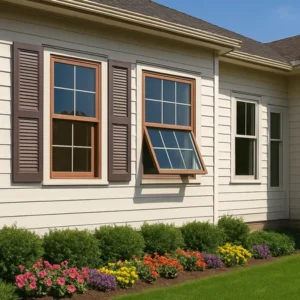When it comes to making your home more comfortable year round, the first thing most people think of would be a kitchen or bathroom renovation. Who does not love a beautiful new kitchen or bathroom!? The reality is while both of these home improvement projects will definitely spruce up your home and make it more pleasing to live in, there are other important projects many people miss when ensuring their home is in tip-top shape. Did you know that excessive air leakage or air infiltration can make it difficult to maintain a comfortable temperature in your home, and lead to uncomfortable drafts and inflated utility bills? It is not always obvious if your home is experiencing air leakage, so that is why we have put together this article. Discover 7 quick ways you can determine whether you have air leakage, and whether it warrants air sealing and insulation.
What is Insulation?
Firstly, however, what is insulation? Insulation works to inhibit the transfer of heat. In the winter, it prevents cold air from the outdoors from penetrating the interior of a house, helping keep the home warmer inside. During the summer, insulation helps trap cool, conditioned air inside the home while resisting heat from the outdoors. Therefore, it is one of the most important features of an energy-efficient home. It goes a long way towards improving comfort by maintaining a constant indoor temperature while reducing the frequency and duration of your heating and cooling system.
1. What is the age of your home?
The first and perhaps easiest way to determine if your home needs air sealing and insulation is the age of your home. If your home was built before 1980 and the insulation has not been upgraded or added to, you may certainly benefit from additional insulation and advancements in insulation technology.
2. Are you comfortable?
Another simple way is to ask yourself: are you comfortable in your home? Are you forced to layer blankets on yourself in winter, even when your heating is on high? Or in the summertime, does your home feel too hot, even with the AC on? If you answered yes to any of these questions, you may have an air leakage or insulation issue, affecting not only the comfort of your home, but your utility dollars, too.
3. Use a smoke pencil
If you have determined your home was built prior to 1980 and answered yes to the questions above, you can use a smoke pencil to pinpoint the exact location of air leakage. First, you need to depressurize your home by closing all the windows and doors and turning on all the exhaust fans and clothes dryer. Next, using a lit incense or smoke pencil, check for air leakage in areas around exterior doors, windows, electrical outlets, recessed lights and door and window trims. The quicker the smoke blows away, the greater your air leakage problem (and the more urgent it is you get it fixed).
4. Try the paper test
The paper test involves sliding a piece of paper in between exterior door jambs and around closed windows. If the paper can fit in any gaps or creases, you can be positive your heated and cooled air is escaping just as easily.
5. Shine a flashlight
Shine a flashlight at night time to locate gaps around outside doors and windows. All you need to do is shine the flashlight at closed door jambs, windows and other areas you suspected are causing air leakage. If the light is visible on the inside of your home, you have identified another problem location that needs fixing.
6. Do you see a build up of dirt?
If you see a build-up of dirt on the surface of your insulation (rim joist pockets in the basement and top plates in the attic), this is a clear sign you have an air leakage problem. The insulation works as a filter to trap airborne dust as the air flows in and out of the home. Similarly, air leakage around exterior wall and floor joists will cause dirt to accumulate in your carpeting near the baseboards, resulting in visible dark colored streaks. These dust tracks are both a common and visible sign your home is experiencing air loss/gain and inefficiency.
7. The blower door infiltrometer
This is not one you can carry out yourself, it should be conducted by a professional energy auditor. A Blower Door Infiltrometer takes readings from advanced equipment to determine the overall extent of air leakage in the home. The auditor can then offer specific air sealing and insulation recommendations that can be undertaken to reduce air infiltration and make your home more efficient and comfortable.
{{cta(‘3cc58be7-5e2b-4dcc-96df-87ec8228a676′,’justifycenter’)}}



